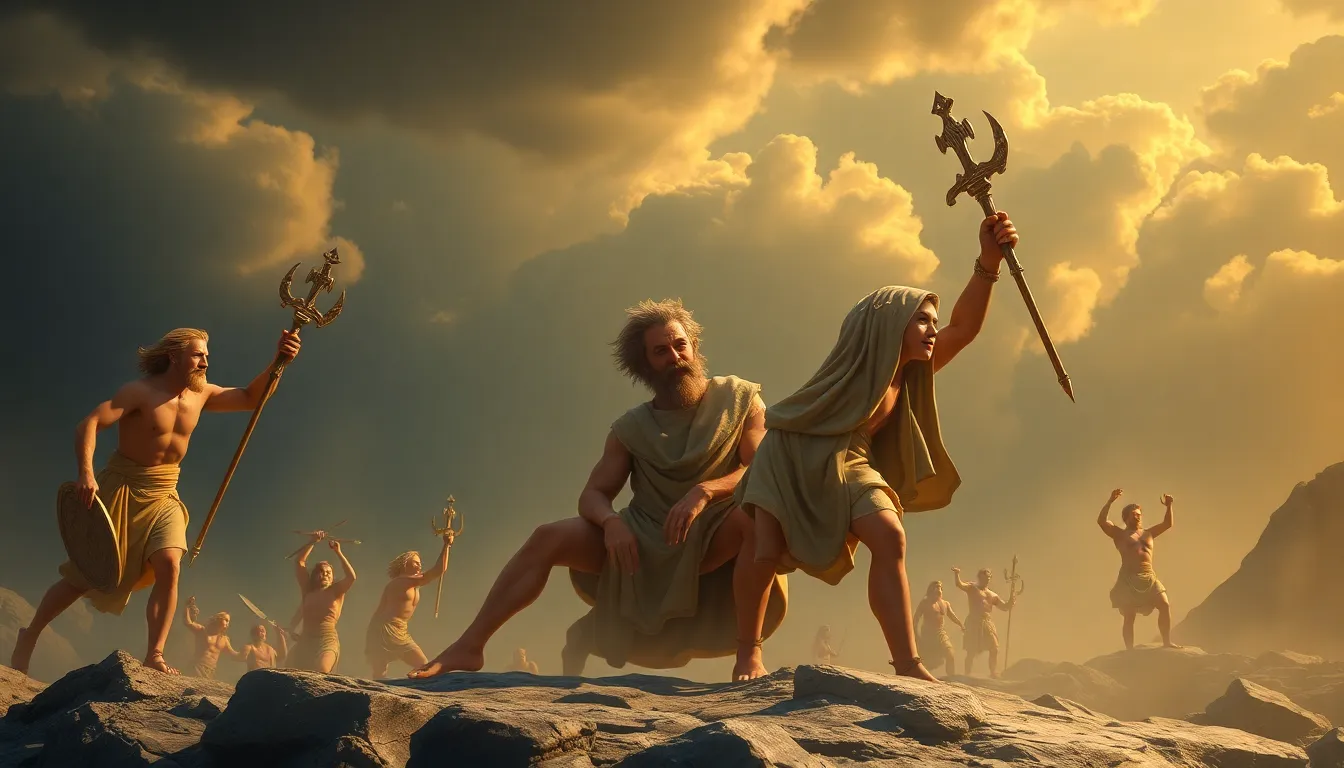The Twelve Labors of Heracles: An Epic Saga of Strength and Bravery
I. Introduction to Heracles: The Hero of Greek Mythology
Heracles, known to the Romans as Hercules, is one of the most celebrated heroes in Greek mythology. Born as the son of Zeus and Alcmene, Heracles possessed immense strength and bravery, which made him a legendary figure. His life, however, was not without challenges, as he faced numerous trials that tested his character and fortitude.
The Twelve Labors of Heracles were a series of feats that he was compelled to undertake as a penance for a tragic crime. These labors not only showcased his superhuman abilities but also served to illustrate his journey from a flawed hero to one of the most revered figures in mythology.
II. The Origins of the Twelve Labors
The Twelve Labors of Heracles were the result of a curse placed upon him by Hera, the queen of the gods. Hera harbored a deep-seated jealousy of Heracles, as he was the illegitimate son of her husband, Zeus. In her wrath, she drove him into a fit of madness, leading him to kill his wife, Megara, and their children.
To atone for this horrific act, Heracles sought the advice of the Oracle of Delphi, who instructed him to serve King Eurystheus of Tiryns. Eurystheus, a cousin of Heracles, would assign him a series of seemingly impossible tasks, known as the Twelve Labors, as a means of punishment and redemption.
III. The First Labor: Slaying the Nemean Lion
The first labor assigned to Heracles was to slay the Nemean Lion, a monstrous beast that terrorized the region of Nemea. The lion had an impenetrable skin, making it nearly invulnerable to weapons. Many had tried to kill it, but all had failed.
Heracles approached the lion with a strategy that showcased both his strength and cunning. After a fierce battle, he discovered that the lion’s skin could not be pierced. Instead, he resorted to using his own bare hands to strangle the beast. After defeating the lion, Heracles wore its skin as armor, a symbol of his victory and strength.
IV. The Second Labor: Slaying the Lernaean Hydra
The second labor involved slaying the Lernaean Hydra, a multi-headed serpent that lived in the swamps of Lerna. For every head that was cut off, two more would grow back, making it a formidable opponent. This regenerative ability rendered the Hydra nearly impossible to defeat through traditional means.
To overcome this challenge, Heracles enlisted the help of his nephew, Iolaus. Together, they devised a plan: as Heracles cut off each head, Iolaus would cauterize the neck with a torch, preventing new heads from growing. This teamwork was crucial, and the labor symbolizes the importance of collaboration and ingenuity in facing life’s challenges.
V. The Third Labor: Capturing the Ceryneian Hind
The third labor required Heracles to capture the Ceryneian Hind, a sacred deer with golden horns and bronze hooves. This hind was known for its incredible speed and was considered a symbol of purity and grace.
Rather than using brute force, Heracles displayed patience and respect for nature. He pursued the hind for an entire year, demonstrating his dedication and determination. Ultimately, he captured the creature without harming it, showcasing his understanding of balance between strength and compassion.
VI. The Fourth Labor: Capturing the Erymanthian Boar
The fourth labor tasked Heracles with capturing the Erymanthian Boar, a gigantic creature known for its ferocity and strength. This labor presented various challenges, including rugged terrain and harsh weather conditions.
Heracles tracked the boar to the top of Mount Erymanthos, where he used his physical prowess and endurance to corner the beast in deep snow. This labor highlighted not only his physical strength but also his perseverance in the face of adversity.
VII. The Final Labors: A Challenge of Wit and Will
The subsequent labors challenged Heracles’ wit and willpower as much as his strength. These included:
- Slaying the Stymphalian Birds: A group of man-eating birds with metallic beaks.
- Capturing the Cretan Bull: A magnificent creature that had terrorized Crete.
- Stealing the Mares of Diomedes: Flesh-eating horses that belonged to the Thracian king.
- Obtaining the Girdle of Hippolyta: The queen of the Amazons.
- Capturing the Cattle of Geryon: A monster with three bodies.
- Fetching the Apples of the Hesperides: Golden apples guarded by a dragon.
- Capturing Cerberus: The three-headed dog guarding the Underworld.
These labors emphasized not only physical strength but also intelligence, bravery, and resourcefulness in overcoming a variety of diverse challenges. Each task required Heracles to think creatively and adapt to new situations, showcasing that true heroism encompasses more than just brawn.
VIII. Conclusion: The Legacy of Heracles and His Twelve Labors
The Twelve Labors of Heracles have had a profound impact on Greek culture and mythology. They serve as timeless tales of heroism, illustrating the values of strength, perseverance, and the importance of facing one’s fears. Heracles is not just a symbol of physical power but also a representation of the human spirit’s ability to overcome adversity.
Through his trials, Heracles teaches us enduring lessons about resilience and integrity. His legacy continues to inspire people today, reminding us that even in the face of seemingly insurmountable challenges, determination and courage can lead to greatness.




